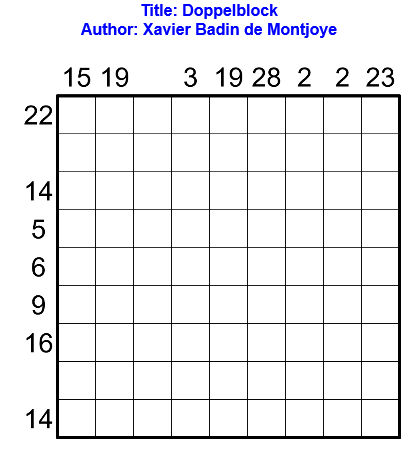
Solve online here. For automatic solution checking, all number must be correctly placed, and cells must be correctly shaded.
Rules : Classic Doppelblock rules.
A 7×7 grid as the last puzzle of the week.

Solve online here. For automatic solution checking, all number must be correctly placed, and cells must be correctly shaded.
Rules : Classic Doppelblock rules.
A 7×7 grid as the last puzzle of the week.
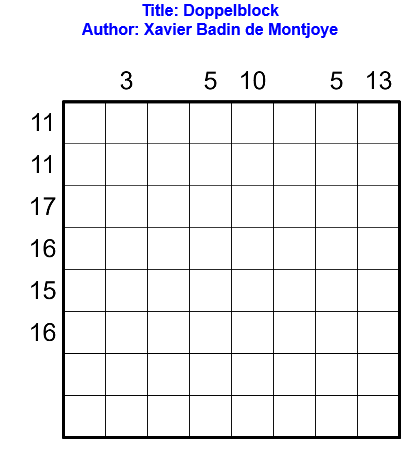
Solve online here. For automatic solution checking, all number must be correctly placed, and cells must be correctly shaded.
Rules : Classic Doppelblock rules.
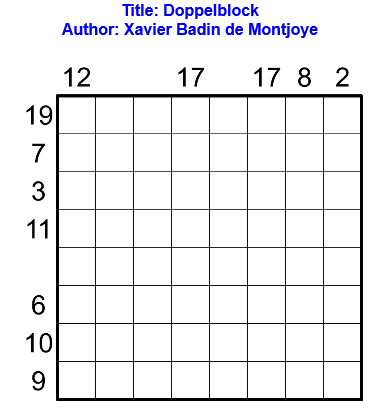
Solve online here. For automatic solution checking, all number must be correctly placed, and cells must be correctly shaded.
Rules : Classic Doppelblock rules.
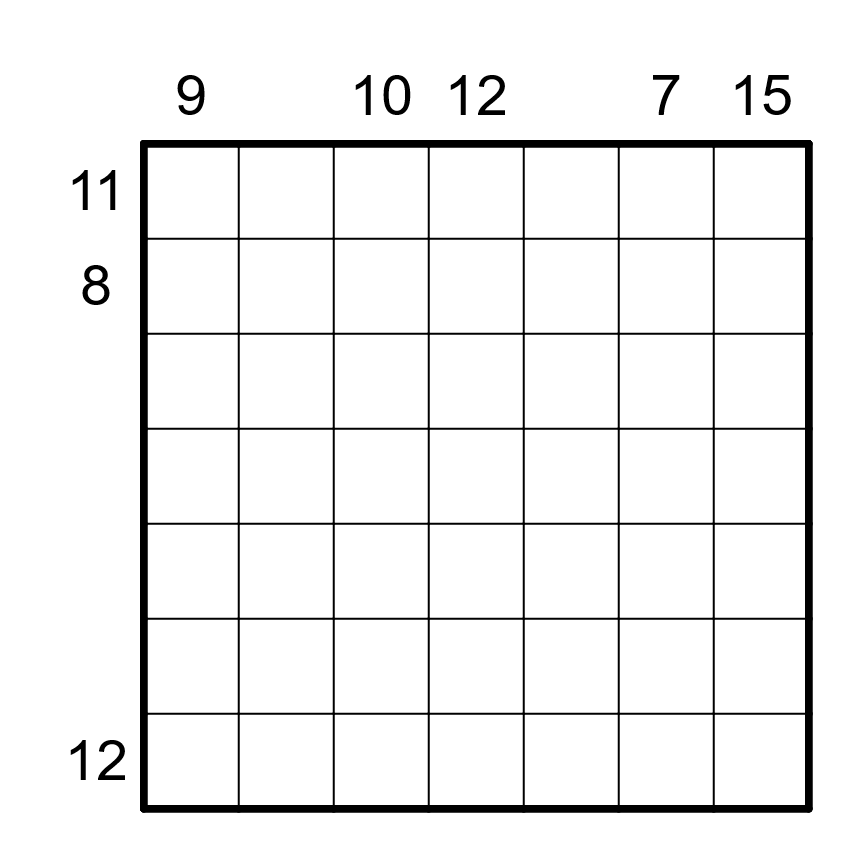
Solve online here. For automatic solution checking, all number must be correctly placed, and cells must be correctly shaded.
Rules : Classic Doppelblock rules.
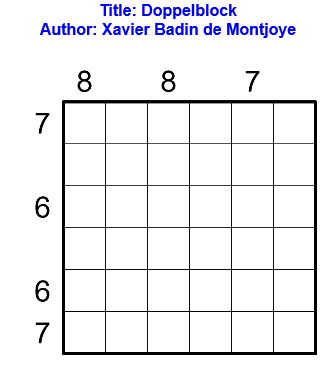
Solve online here. For automatic solution checking, all number must be correctly placed, and cells must be correctly shaded.
Rules : Classic Doppelblock rules.
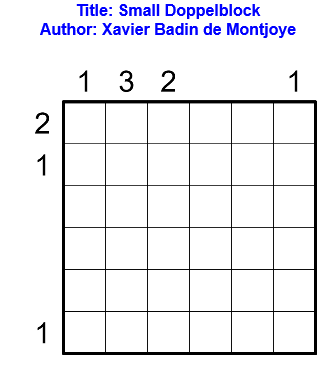
Solve online here. For automatic solution checking, all number must be correctly placed, and cells must be correctly shaded.
Rules : Classic Doppelblock rules.
The goal here was to construct a grid with only small numbers as clue.
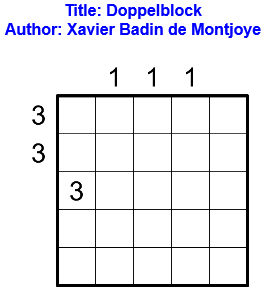
Solve online here. For automatic solution checking, all number must be correctly placed, and cells must be correctly shaded.
Rules : Classic Doppelblock rules.
Doppelblock rules : shade exactly two cells in each row and each column. In the remaining cells, place an integer between 1 and X-2, where X is the number of cells in each row, such that each number appears exactly once in each row and each column. Number outside the grid indicate the sum of the numbers between the two shaded cells. Some cells may already be filled for you.
Here is an example of a Doppelblock grid and its solution
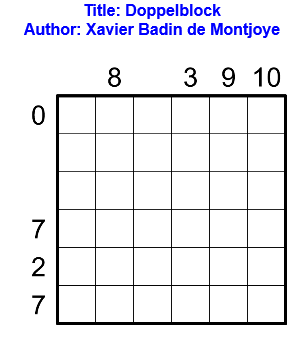
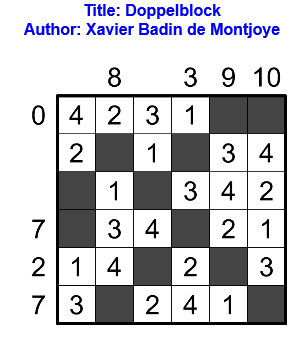
Solve online here
According to the WPC unofficial wiki, doppelblock appeared in online qualifier for the Japan Puzzle Championship 2016 by an unknown author. It was latter independently created by Naoki Inaba (Japan).
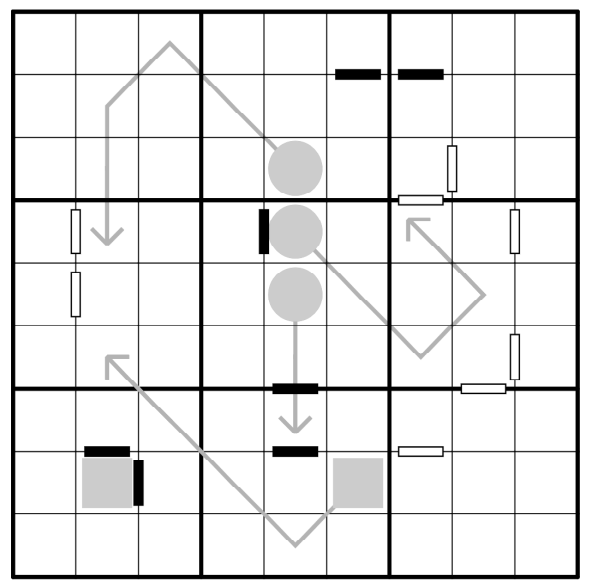
Classic Sudoku rules applies.

Normal Sudoku rules applies. The sum of digits along an arrow are a multiple of the cell closest to the arrow. Digits may not repeat along arrows. The sum of digits along a double arrow are a multiple of the square of the cell closest to the arrow.
Good luck!
If you like this sudoku variant, there is another one here!